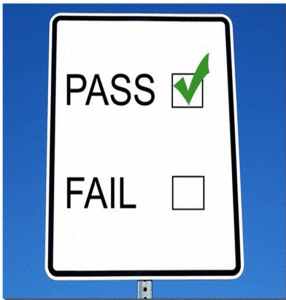
Are the drug testing cheaters winning?
Google “beat drug test” and you’ll find over 42 million returned results. All the websites you’d expect to be there are there, HighTimes, NORML, a host of blog posts but now you’re starting to see information posted on even more mainstream sites like the Huffington Post. You would think that mainstream news outlets would refrain from dispensing advice about how to beat a drug test, but they are. The good news for employers is that there’s so much bad advice being passed around it’s hard for the average person to know good advice from bad. One of my favorites is the guy with 24,000 YouTube views who claims he has a way to beat any type of drug test by following a certain websites “step-by-step instructions” but then fails to provide the link to the site inadvertently providing evidence that drugs don’t improve your mental capacity. The bad news for employers is that there are true flaws in the drug testing process and there is no shortage of people dispensing advice on how to “beat your test” and because there is often so much at stake people will go to the greatest of lengths to avoid testing positive. As an example, in 2007 Sam Lutfi, Britney Spears manger testified that she shaved her head because she was afraid that a hair drug test could be used against her in a child custody battle with her ex-husband. For the average person, cheating a drug test isn’t a walk in the park. Even Lance Armstrong, someone with vast resources at his disposal, would have been busted by his drug tests early on in his career had it not been for his collusion with the UCI, cycling’s world governing body.
One would expect the “beat the drug test” topic to become increasingly more popular as more people are engaging in drug use. According to Quest Diagnostics, the nation’s largest drug testing laboratory, there were approximately 15,000 more positive workplace drug tests in 2013 than in 2012 – “the first time the positivity rate for combined national workplace urine drug tests has increased since 2003”. This trend will undoubtedly continue to increase as more states legalize recreational marijuana (currently Colorado, Alaska, Oregon and Washington). The vast majority of illegal drug abuse in the U.S. is related to marijuana use by a factor of three; with prescription drug abuse coming in a distant, but still worrying second.
According to a survey conducted by the Current Consulting Group, a reputable subject matter expert in the drug testing industry, 70% drug testing professionals polled thought that 5% or more of all test samples submitted have been adulterated, diluted, or switched. If their suspicions are true, there is a lot of cheating going on.
What cheats are being suggested and are they working?
According to High Times publisher Richard Cusick, urine testing is “so easily beat” suggesting you can use a spike, substituted urine or take a dilution. So is he right? Cusick estimated the “drug test solutions (beat the test)” industry is as much as 10% of the total drug testing industry revenue which makes it a $200-600 million dollar market depending on your source and what you consider as part of the market. It would be hard to believe that an industry of that size could exist if nothing worked. That would be an astounding figure for people to spend on false hope.
Let’s look at the various methods as related to urine testing, the most common testing method and the method most susceptible to cheating due to standard practice of allowing the donor privacy during the collection.
Timing drug use:
Although this isn’t traditionally thought of as cheating in the same sense that substituting a sample or spiking a sample is considered cheating, it is cheating nevertheless because the user’s intent is to deceive the employer about their use. This is probably the most widely form of cheating because it just simply works, and it’s free. Why does it work? Each drug has a limited window of detection. For example, for light users its detection period might be only 2-4 days. So it doesn’t take a rocket scientist to figure out that all you need to do abstain from use days before taking a test. This works well for pre-employment or position reassignment testing because a user would have some advance notice. Anyone failing a pre-employment test for cocaine should take it as a sign to quit as the drug has obviously has taken its toll on their mental faculties. It doesn’t work so well however, for other testing scenarios like random selection. This method is a bit more challenging for heavy users or for those who use drugs with longer detection times such as marijuana which may take as long as a month and a half to exit the system.
Does it work? Yes. However the varying physical characteristics of the donor such as gender, body weight, body fat and level of use make it not entirely predictable. This method mostly applies to pre-employment testing where a user would know well in advance a test was required and can be easily thwarted by the employer performing hair testing which can detect drug use for a longer period of time.
Swapping the drug of choice:
One technique is for users to simply swap out one drug for another which they might not be tested for. Does it work? Yes. Not much else to say here. If you’re taking a drug which isn’t part of the drug testing panel then nothing is going to be detected. However, most employers have the liberty to test of a wide variety of drugs – not just the most commonly tested (amphetamines, barbiturates, bath salts, benzodiazepines, cocaine, marijuana, synthetic cannabinoids, MDMA (Ecstasy) and its metabolite, methadone, opiates, oxycodones, phencyclidine (PCP) and propoxyphene). So unless one had some sort of advance knowledge about the panel of drugs being tested for they would be taking a risk with any substance. Labs can even test for some of the “new to market” substances like K2/Spice or other synthetic cannabinoids.
Sample spiking or “adulteration”:
Adulteration of a drug test means adding a foreign substance to the urine sample (Ex. “destroy ALL Toxins on Contact”). Users have tried anything and everything under the sun including, dish soap, eye drops, vinegar and a multitude of additives. The web shops that are selling these items online would have you believe their products are fail proof. However, there’s little but anecdotal evidence to verify whether any of these substances work. It may be that many instances where users believe the product works is more the result of their ignorance about detection times -thinking they passed the test because of the adulterant when they were tested before or after the detection window.
These websites claim to have validation by scientific testing, however there’s no way to authenticate their claims. The FDA isn’t in the business of testing or validating these products so you have absolutely no proof they work, or worse, what they actually contain. Several states prohibit the sales of adulterant substances marketed for the purpose of besting a drug test and a few states have even made it a felony.
Does it work? It’s certainly possible. However it would take a massive leap of faith by trying them. Most laboratories can, and do perform validation testing which can easily spot adulterants.
Substituted sample:
Substitution is when a user swaps out their urine sample for that of another or a synthetic. This can also include using powdered urine (prepared ahead of time).
Does it work? It can. If one is successful in obtaining a clean sample, avoiding detection at the collection site and keeping it at the correct temperature then this method would generally work – assuming the collection is not an observed collection which it is often not. This method of cheating is of great concern to the drug testing community which is why you’ll likely see more of a push towards oral or hair drug testing.
Dilution:
Dilution occurs when the donor attempts to flush out or significantly reduce the detectable amount of toxins by drinking excessive amounts of liquids. A urine sample reported as a positive dilute is still a positive test, however a negative dilute make things a bit more complicated for employers. Most drug tests which are reported by the laboratory as anything other than a negative will be reviewed by a medical review officer (physician). In the case of a negative dilute, the MRO would ask the donor to show how they could physiologically do so, and if unable to do so, the drug test result becomes a “Refusal to Test” because of a substituted specimen. There may be a requirement for an immediate re-collect or the employer might not have a policy addressing the situation or the employer might simply be confused about how to handle the situation.
How do labs test for dilution or adulteration?
Color (exceptionally clear samples may be rejected), temperature (out of range), Glutaraldehyde tests, Nitrite tests, oxidants tests, PH level, creatinine level, and specific gravity.
- Creatinine is a waste product the body expelled in urine. It’s generally found equal to over 20 mg/dL.
- pH tests for the presence of acidic or alkaline adulterants in urine. Normal pH levels should be in the range of 4.0 to 9.0. Values outside of this range may indicate the sample has been altered.
- Adulterants such as UrinAid and Clear Choice contain Glutaraldehyde which is not typically found in normal urine.
- Specific gravity measures the density of urine and diluted samples will often measure much lower than 1.003
- Nitrite is found in some off-the-shelf adulterants but is not found in normal urine.
- Oxidants/PCC (Pyridinium Chlorochromate) tests for the presence of oxidizing agents such as bleach and hydrogen peroxide. Adulterants such as UrineLuck contain oxidants.
Does it work? It depends. It is one of the most frequently utilized tactics suggesting that there’s enough anecdotal evidence floating around that it has been successful for some and so the advice is further propagated. However, it is very far from a sure-fire solution.
Hiding behind a prescription.
Prescription drug abuse is the second most common form of illicit drug use behind marijuana. There’s a host of legally prescribed substances which can affect the central nervous system – most of them opioid-based medications. Although legal to obtain with prescription they can be just as deadly, addicting and problematic as illegal substances. As opposed to other drugs of abuse, the mere presence of prescription drugs in a person’s system does not constitute an offense. In addition, employees can be protected under the Americans with Disabilities Act (ADA), which limits an organization’s ability to question its employees’ use of such drugs unless an employee’s behavior is compromising workplace safety.
Generally as long as someone has a prescription for a medication for which they test positive they would be in the clear, so long as they are taking it in accordance with the prescribed dosage. Laboratories test not just for the presence of these substances but also for the levels – meaning they can tell if your taking more than the allowed dosage. Additionally, some employers may require disclosure of medications (generally those performing safety-sensitive duties) and failure to do so may have consequences.
Does it work? Mostly yes. However users who abuse prescription opiates tend to build a tolerance over time and must continually increase dosages to get the same initial high.
So, are the drug test cheaters winning?
There is no clear winner in the battle between the drug abusers and the drug testers. Some have found technics that work some of the time which is clearly a “win” for them, no matter how illogical. Employers are utilizing alternative testing techniques such as hair testing and oral testing which reduce the opportunities for the donor to cheat. One thing is clear however, there are a lot companies making a lot of money spreading false hope. These companies are typically marketing a magic bullet, “just add this and you’re in the clear” – and it just isn’t that easy. As time marches on, more and more companies will embrace new technology (oral testing, for example) that will take away the biggest opportunity to cheat – privacy in the restroom; and that will be a true game changer. However, simultaneously, states are increasingly becoming more and more open to allowing medical and recreational marijuana use. Companies will be undoubtedly begin to reevaluate their drug testing policies and many will likely loosen their policies following along with the cultural shift.
What can employers do about cheating?*
- Utilize non-urine testing methods (hair, oral). Positivity rates for hair testing are far higher than urine and it’s far near impossible to substitute samples for hair and oral methods.
- Educate your employees. Make the drug free workplace program known to your employees. Ensure every employee has been provided a copy of the drug free workplace program and possibly include mandated employee drug and alcohol awareness training and/or supervisor reasonable suspicion training.
- Ensure your drug free workplace policy defines the consequences of cheating and refusals. In short, a refusal and attempt to cheat (successful or not) should have the same consequences as testing positive.
- Define prohibited behavior in your drug free workplace policy and update it to ensure you’re addressing rapidly changing state laws.
- Promote your employee assistance program to encourage drug abusing employees to seek help.
- Incorporate a random drug testing program. Most experts agree that a well-run random selection program is an effective deterrent.
*Be sure to check with your state laws before implementing.
What are collectors doing about cheating?
By following best practices collectors can help prevent cheating by:
- Preparing the collection area (turning off sources of water, utilizing bluing agents)
- Requiring donors to wash their hands prior to voiding
- Requiring donors to leave unnecessary items of clothing or accessories before going into private areas.
- Observe the sample void (when allowed)
- Check the temperatures of samples
- Be observant. Watch for abnormal behavior.
- Utilize validity testing suspect samples (when allowed)
- Maintain an educated, well trained collection administrators
It will be interesting to see how things play out. In the near future, we believe that as non-urine testing becomes more and more prevalent cheating a drug test will become increasingly more difficult.
————————————————————————————————————————-
PLEASE NOTE: This information is presented as general educational information. It is not legal advice, either express or implied. Consultation with your legal counsel is recommended for all employment law matters.
— AtHandTraining.com provides awesome drug and alcohol awareness courses online.
Buy DOT Supervisor Course
Buy DOT Employee Drug Awareness Course
Buy DFWP Supervisor Course
Buy FAA Recurring Course


